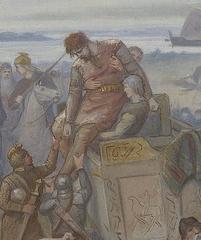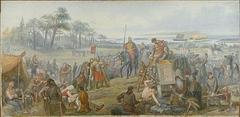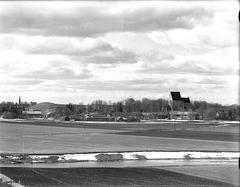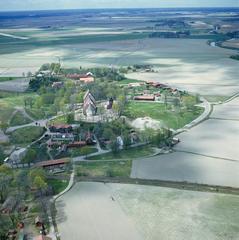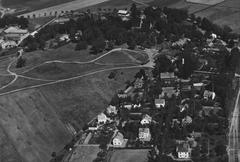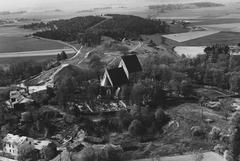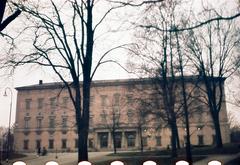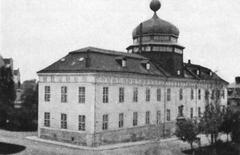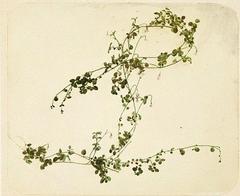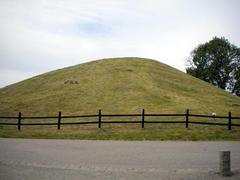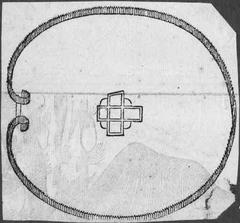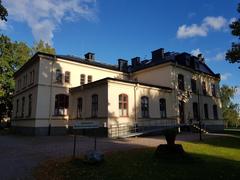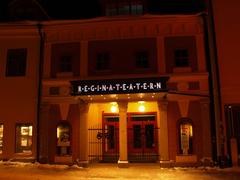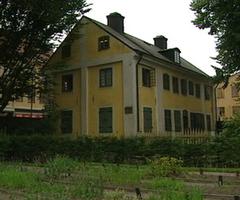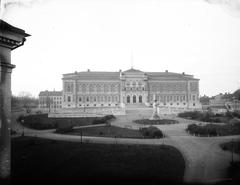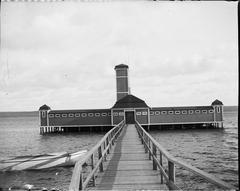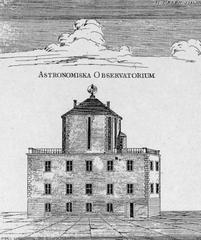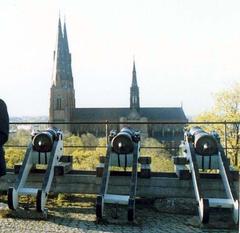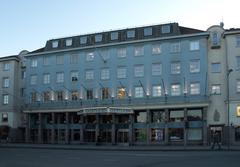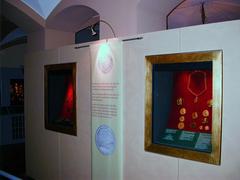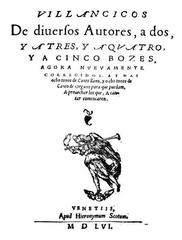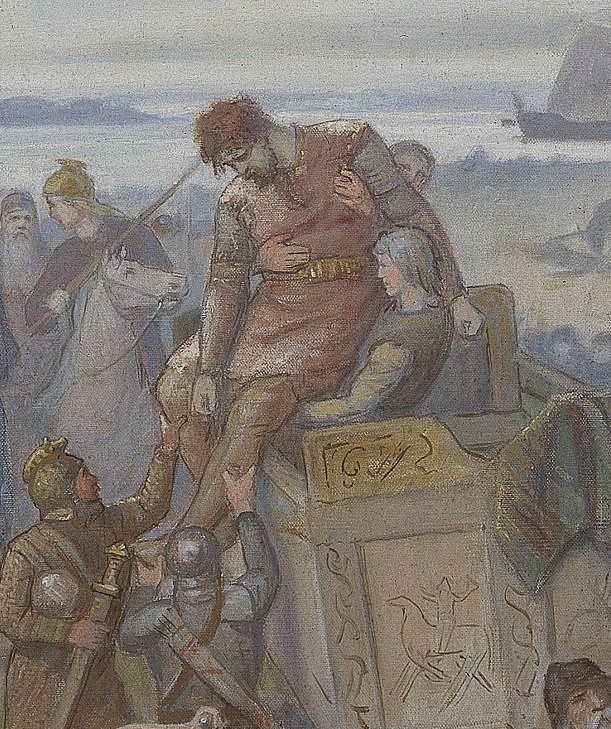
Visiting Gamla Uppsala Historical Site in Uppsala, Sweden: Tickets, Hours, and Tips
Date: 14/06/2025
Introduction: Discovering Gamla Uppsala’s Historical Significance
Located about five kilometers north of modern Uppsala, Gamla Uppsala is one of Sweden’s most iconic and historically rich destinations. The site is renowned for its monumental Royal Mounds, ancient burial grounds, and the medieval Gamla Uppsala Church. A center of Norse religion and Swedish monarchy, Gamla Uppsala was pivotal in Scandinavia’s transition from paganism to Christianity, serving as the seat of Sweden’s first archbishopric in the 12th century (Ancient Origins; Wikipedia: Gamla Uppsala; World History Encyclopedia).
Today, visitors can explore royal burial mounds believed to be the resting places of mythic Yngling dynasty kings, ancient rune stones, and a landscape steeped in legend. The Gamla Uppsala Museum offers exhibitions and guided tours, bringing to life the archaeological wonders and stories of Sweden’s early history (Destination Uppsala; Life in Norway).
Table of Contents
- Historical Overview
- Visitor Information
- Highlights: What to See and Do
- Frequently Asked Questions (FAQ)
- Conclusion & Recommendations
- Sources
Historical Overview
Prehistoric and Early Settlement
Gamla Uppsala developed as a thriving community by the 7th century CE, thanks to its fertile lands and strategic location near Lake Mälaren. Archaeological evidence points to significant settlement and trade, laying the foundation for its later prominence (Ancient Origins).
The Royal Mounds and Burial Practices
The site is defined by three massive Royal Mounds, each about 9–10 meters high. These are believed to be the burial sites of legendary kings from the Yngling dynasty. Excavations have revealed cremated remains, grave goods, and textiles, some bearing Arabic inscriptions—evidence of far-reaching trade and cultural exchange (Ancient Origins; Amber Everywhere).
Norse Religious Center
Gamla Uppsala was the heart of Norse pagan worship, home to the grand Temple of Uppsala. Medieval chronicler Adam of Bremen described it as a gold-adorned structure surrounded by a sacred grove, where rituals and sacrifices honored the gods Odin, Thor, and Freyr (World History Encyclopedia). The annual “Thing” assembly combined religious and political functions (Paganheim).
Transition to Christianity
From the 9th century onward, Christianity spread in Sweden, culminating in the establishment of Sweden’s first archbishopric at Gamla Uppsala in 1164. The Gamla Uppsala Church was constructed on or near the site of the pagan temple, symbolizing the nation’s religious transformation (Wikipedia: Gamla Uppsala; Ancient Origins).
Medieval Significance and Cultural Memory
Medieval Uppsala remained a religious and political hub until the archbishopric moved to the modern city in the 13th century. Today, Gamla Uppsala is a protected monument and a symbol of Swedish cultural heritage (Destination Uppsala).
Visitor Information: Practical Details for Your Trip
Visiting Hours
-
Gamla Uppsala Museum
- January–April: Wed–Sun, 12:00–16:00
- May–September: Daily, 11:00–17:00
- October–December: Wed–Sun, 10:00–16:00
- Closed: Midsummer’s Eve (June 20, 2025), Christmas Eve/Day, New Year’s Eve/Day (upplandsmuseet.se)
-
Royal Mounds & Outdoor Sites: Open year-round, no closing hours.
Tickets and Admission
- Museum Entrance: Adults 150 SEK, Students/Seniors 120 SEK, Children/Youth (0–19) free, Annual Pass 280 SEK.
- Outdoor Sites: Free.
- Tickets available online or at the museum (uppsalasmuseer.se).
Accessibility
- Museum and main facilities are wheelchair accessible.
- Outdoor areas: Paths around the mounds are grassy and may be uneven; accessible restrooms and parking are available.
- Assistance dogs are welcome.
Guided Tours and Events
- Guided Tours: Included in museum admission. Swedish tours weekends at 13:00, English at 15:00; daily tours mid-June to mid-August.
- Private Tours: Available year-round; booking required.
- Special Events: Midsummer, Viking reenactments, lectures, and workshops throughout the year (destinationuppsala.se; upplandsmuseet.se).
Travel Tips and Nearby Attractions
- Getting There: Bus lines 2 and 210 from central Uppsala (15–20 min); cycling paths; parking available on-site (destinationabroad.co.uk; historyhit.com).
- Nearby Sights: Uppsala Cathedral, Gustavianum Museum, Carolina Rediviva Library, Disagården Open-Air Museum.
- Dining: Odinsborg Restaurant, picnic areas, and nearby cafés.
Highlights: What to See and Do
- Royal Mounds: Three monumental burial mounds from the 6th century, accessible for walking and panoramic views (Amber Everywhere).
- Gamla Uppsala Museum: Exhibits artifacts from the Iron Age to Viking era; interactive displays and educational activities (Try Travel).
- Gamla Uppsala Church: 12th-century stone church, notable for its medieval frescoes and runic inscriptions (Life in Norway).
- Rune Stones: Several stones with inscriptions, reflecting the region’s religious transition.
- Walking Trails: Accessible paths through the archaeological landscape, suitable for all ages.
- Seasonal Events: Midsummer festivals, Viking reenactments, and family-friendly workshops (Wanderlog).
Frequently Asked Questions (FAQ)
Q: What are Gamla Uppsala’s visiting hours?
A: Museum hours vary seasonally (see above); outdoor sites are open year-round.
Q: Is there an entrance fee for the Royal Mounds?
A: No, outdoor areas including the mounds are free to access.
Q: Are guided tours available in English?
A: Yes, tours in English and Swedish are offered; included in museum admission.
Q: Can I climb the Royal Mounds?
A: Yes, but be cautious as the terrain can be uneven.
Q: Is the site accessible for visitors with disabilities?
A: The museum and main facilities are accessible; some outdoor paths may be challenging.
Q: How do I get there from Uppsala?
A: Take bus 2 or 210, cycle, drive, or walk from central Uppsala.
Conclusion & Recommendations
Gamla Uppsala is an extraordinary window into Sweden’s ancient past. From the awe-inspiring Royal Mounds and medieval church to the rich exhibits in the museum, the site offers something for history enthusiasts, families, and casual travelers alike. Take advantage of guided tours, seasonal events, and nearby attractions for a full experience.
Tips for Your Visit:
- Visit in June for pleasant weather and lively festivals.
- Book tickets and tours in advance during peak seasons.
- Use the Audiala mobile app for audio guides and real-time updates.
Gamla Uppsala is a must-see for anyone interested in Viking history, Norse mythology, or Scandinavian heritage. Plan ahead to make the most of your journey into Sweden’s storied past.
Sources
- Ancient Origins
- Wikipedia: Gamla Uppsala
- World History Encyclopedia
- Paganheim
- Destination Uppsala
- Life in Norway
- The Hidden North
- Wanderlog
- Destination Abroad
- HistoryHit
- Upplandsmuseet
- Sweden Life
- Amber Everywhere
- Try Travel
- HistoryTools
